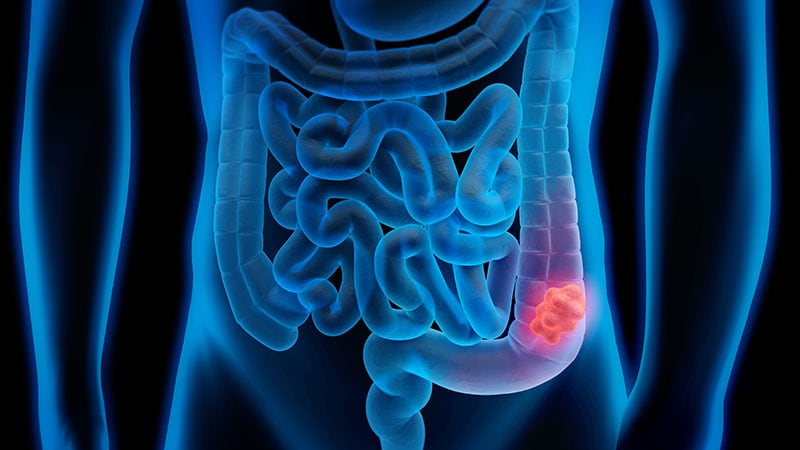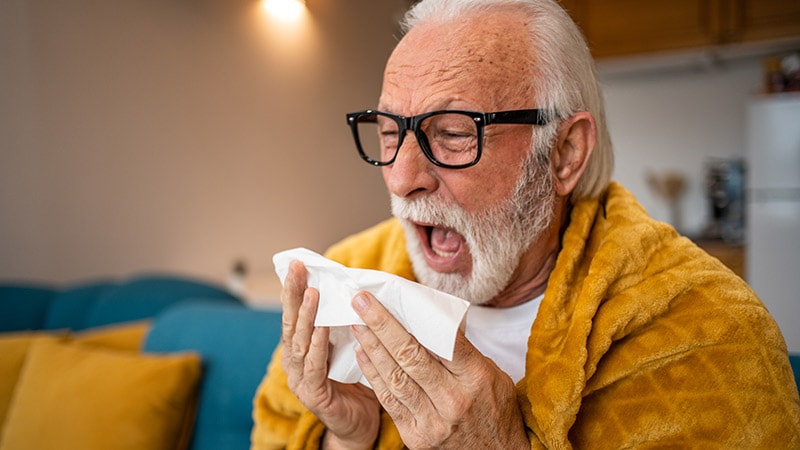The observed mortality increase in COVID-19 patients with a history of cancer during the first wave of the pandemic appears to have disappeared by the second wave, leaving cancer patients at no greater risk, suggests a UK analysis.
This could be due to a number of factors, including more effective treatment for COVID-19, the protective effect of vaccination against the virus, and the resumption of standard cancer therapy, suggests an expert.
Almost 660 cancer patients and matched control patients admitted to University College London Hospitals, London, during the first two waves of the pandemic were studied (between March and May 2020 and between December 2020 and February 2021).
During the first wave, cancer patients with COVID-19 were 57% more likely to die than controls, but the association was no longer present by the second wave, with overall mortality in cancer patients dropping by 59% between the two waves.
Across both waves, cancer patients who were receiving systemic anti-cancer therapy such as chemotherapy and those with metastatic disease were twice as likely to die than other cancer patients.
Lead author Dr Alasdair Sinclair said a history of cancer was “not associated with increased mortality” in the second wave of the pandemic, “despite the presence of the more transmissible B.1.1.7 SARS-CoV-2 variant”, sometimes known as the Kent or UK [Alpha] variant.
“This emphasises the need for ongoing protection of patients with advanced cancer and those on systemic anti-cancer therapy, including through their prioritisation for COVID-19 vaccination globally.”
The research was presented at the European Society for Medical Oncology (ESMO) Annual Meeting 2021 on September 17.
'Interesting' Analysis
Dr Dario Trapani, a medical oncologist from the European Institute of Oncology, Milan, Italy, told Medscape News UK that the analysis is “very interesting”.
He said that the finding that cancer was no longer associated with COVID-19 mortality in the second wave is “very important”, although there are many different ways of interpreting the result.
It is important not to draw too many conclusions from the study, he said, as it was a retrospective analysis, and so any interpretations are “speculative”.
Moreover, the presented data do not include information on tumour type, which is relevant “because of course not all tumours are the same, and not all cancer patients are the same”.
For example, it is well known that patients with haematological malignancies have worse COVID-19 outcomes than those with solid tumours, in part due to receiving “very intense treatments” that are often immunosuppressant.
Dr Trapani therefore pointed out that, if there were more cancer patients in the first wave who were more vulnerable to COVID-19 infection than those in the second wave, it may have contributed to the mortality differences.
He nevertheless suggested that one reason for the improved survival in the second wave could be “because we started to use effective treatment” for COVID-19, with many of the drugs used in first wave shown to be ineffective or even harmful in the interim.
In addition, the fast initial rollout of COVID-19 vaccination in the UK means that, as they were a priority group, some of the cancer patients treated in the second wave will have received one or both of their doses.
“I can't really say if the change in outcome” between the first and second waves “is also related to the fact they had some immunity…but perhaps it is the case”.
Dr Trapani continued that changes in the way cancer care was delivered between the first and second waves could have played a role in improving outcomes.
“In effect, during the first wave, patients were getting less and less cancer treatment,” he said, with chemotherapy exposure dropping “dramatically”.
He underlined that, if a treatment is prescribed for a patient, “it's because you know it has value”, and so an increased mortality risk from reduced treatment exposure is simply the “consequence” of that.
Another aspect could be that many cancer patients had their treatment changed. “For instance, a lot of patients stopped their chemotherapy abruptly and switched to a de-escalated treatment” during the first wave, Dr Trapani said, whereas this was not observed to the same extent in the second.
Waves
Dr Sinclair notes that previous studies have shown that during the first wave of the COVID-19 pandemic, cancer was associated with poorer outcomes, and that a history of a solid malignancy was an independent risk factor for mortality.
The second wave of the pandemic in the UK, which ran from December 2020 into the early months of 2021, had a greater peak than the first, so the researchers set to determine whether the outcomes for cancer patients differed between the two waves.
The team conducted a retrospective analysis of patients who presented to their institution via the emergency department or other routes with a confirmed COVID-19 infection between March and May 2020, and again between December 2020 and February 2021.
They matched COVID-19 patients with cancer to those without cancer, and gathered patient demographics and oncological variables, such as cancer subtype, staging, and anti-cancer treatment.
Over the 92-day period between 1 March and 31 May 2020, 626 patients presented with COVID-19 infection. From these, 94 cancer patients were matched with 226 non-cancer patients.
In the 70 days between 1 December 2020 and 8 February 2021, 1135 COVID-19 patients presented to the institution. From these, 113 cancer patients were matched with 226 controls.
The team calculated that overall mortality in cancer patients was lower in the second wave of the pandemic versus this first, 16% versus 44% or a hazard ratio of 0.41 (95% CI 0.30–0.56; p<0.0001).
During the first wave, a cancer diagnosis was significantly associated with mortality after adjusting for age, ethnicity, and comorbidities, at a hazard ratio of 1.57 (95% CI 1.04–2.40), but the association was no longer significant in the second wave, when the hazard ratio was 0.98 (95% CI 0.56–1.70).
In the second wave, there was a trend towards improved survival for hospitalised patients receiving COVID-19-specific treatments, including dexamethasone, remdesivir and tocilizumab, at a hazard ratio of 0.75 (p=0.086).
Combining both cancer cohorts, the researchers found that receipt of systemic anti-cancer therapy was an independent predictor of mortality, at a hazard ratio of 2.01 (p=0.02). There was a trend for increased mortality associated with cytotoxic chemotherapy, at a hazard ratio of 1.93 (p=0.08).
The presence of metastatic disease was also significantly associated with mortality across the cancer cohort, at a hazard ratio of 2.10 (p=0.04).
As expected, each 10-year increase in age was associated with an increased mortality risk, at a hazard ratio of 1.43 (p=0.002), and being treated in the second versus the first wave of the pandemic was associated with a reduced mortality risk, at a hazard ratio of 0.28 (p<0.001).
No funding declared.
Dr Sinclair declares no relevant financial relationships.
Other authors declare relationships with Novartis; BMS; MSD; Immunocore; Idera; Iovance; Sanofi Genzyme/Regeneron; Macrogenics; Roche; Daiichi Sankyo; Eli-Lilly; Pfizer; G1 Therapeutics; AstraZeneca.
ESMO Congress 2021: Abstract 1575P. Presented September 17.



